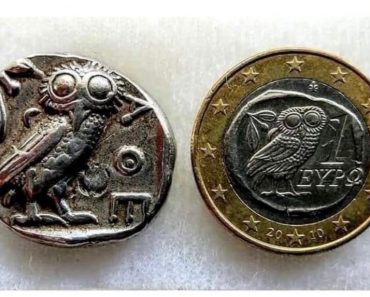In the heart of the Aegean Sea, on the quiet and solitary island of Sikinos, stands an architectural jewel that has witnessed two thousand years of history: the Mausoleum of Episkopi. This monument, dating back to the 3rd century AD, is not only a reflection of the grandeur of ancient Rome but also a window into the religious and cultural transformation the island underwent, transitioning from a Roman mausoleum to a Byzantine church—a change that facilitated its preservation and the respect for its original form.
Thanks to an arduous restoration process completed in 2022, this ancient place of worship has come back to life, revealing forgotten secrets and enriching itself with a new identity that reflects the fusion of classical and Christian elements.
Sikinos is a small, rocky island located in the Cyclades archipelago in the Aegean Sea, between Ios and Folegandros. Despite its proximity to popular tourist destinations, Sikinos has managed to maintain its authentic character and tranquil lifestyle. With a population of no more than 300 inhabitants, the island is far from the bustle of mass tourism, making it a haven for those seeking to escape the noise and immerse themselves in Greece’s history and nature.

In antiquity, Sikinos was known as Oinoe (in ancient Greek: Οἰνόη, “Island of Wine”) due to its economy based on wine production. Its strategic location and natural harbor made it a coveted spot throughout various eras, from the Romans to the Byzantines. However, one of the island’s most fascinating features is the Mausoleum of Episkopi, a structure that has withstood the passage of time, earthquakes, and human interventions.
The Mausoleum of Episkopi was erected in the 3rd century AD during the peak of the Roman Empire, in what is now the center of the ancient city of Sikinos. Its impressive size, disproportionate to such a small island, suggests the building originally served a highly significant funerary function, adopting the form of an ancient temple. Over the centuries, the structure was adapted and transformed into a Byzantine church dedicated to the Virgin Mary, which allowed it to remain in use for over a thousand years and survive almost intact.
The conversion of ancient Roman buildings into Christian churches was not uncommon in the Mediterranean world, but the case of Episkopi is particularly intriguing due to the preservation of Roman architectural elements that fused with features characteristic of Byzantine churches. Recent restoration has made it possible to clearly identify these historical phases, highlighting the monument as a unique architectural palimpsest that combines influences from various eras.

In 2016, after half a century of abandonment, the Museum of Cycladic Antiquities launched an ambitious restoration project to restore Episkopi to its former glory. The structure, which had suffered significant damage from earthquakes and the passage of time, was at risk of collapse. The restoration process aimed not only to ensure the monument’s physical integrity but also to uncover and preserve traces of its history.
The work was meticulous and thorough. Systems were installed to monitor the microclimate and protect the Byzantine wall paintings, as well as to stabilize the most damaged structures. During excavations, archaeologists made significant discoveries, such as inscriptions dating from the Roman era, fragments of Byzantine frescoes, and, most notably, the discovery of a sealed tomb containing the remains of a high-ranking woman, identified as Neiko through an inscription found at the site. The mausoleum was likely constructed for her. This discovery was not only surprising due to its excellent state of preservation but also because the burial exhibited necrophobic superstitious rituals.
In addition to architectural restoration, an exhaustive analysis of the monument’s construction phases was conducted, allowing experts to identify interventions made during the Byzantine period, such as the addition of a new barrel vault after the original collapsed. Archaeologists also documented the presence of Byzantine frescoes covering the walls, attesting to Episkopi’s significance as a place of worship during the medieval period.

The effort to restore and preserve the Mausoleum of Episkopi was internationally recognized in 2022 when the project was awarded the prestigious Europa Nostra Award. This award, which celebrates achievements in cultural heritage conservation, highlighted the quality of the restoration, carried out with a respectful approach to the monument’s authenticity. The use of local materials and the preservation of original elements, such as columns and fragments of the entablature, were key aspects ensuring the monument retained its historical character while adapting to contemporary needs.
The Europa Nostra Award not only recognized the work of the restorers but also the commitment of the Sikinos community, which actively participated in the project by providing accommodation, transportation, and logistical support to the work teams. This joint effort between local authorities and experts from the Cyclades Antiquities Ephorate has allowed Episkopi to become a cultural beacon for the island and the region.
From its conversion into a Byzantine church in the 8th century to its continued use today, Episkopi has been a central site in the religious and cultural life of the island. Today, the church dedicated to the Virgin Mary remains a focus of devotion, especially during the Feast of the Dormition of the Virgin, celebrated each August.
This article was first published on our Spanish Edition on January 3, 2025: El mausoleo romano de Episkopi, que contenía la tumba sellada de una mujer llamada Neiko, ha llegado prácticamente intacto hasta nuestros días
Discover more from LBV Magazine English Edition
Subscribe to get the latest posts sent to your email.
















